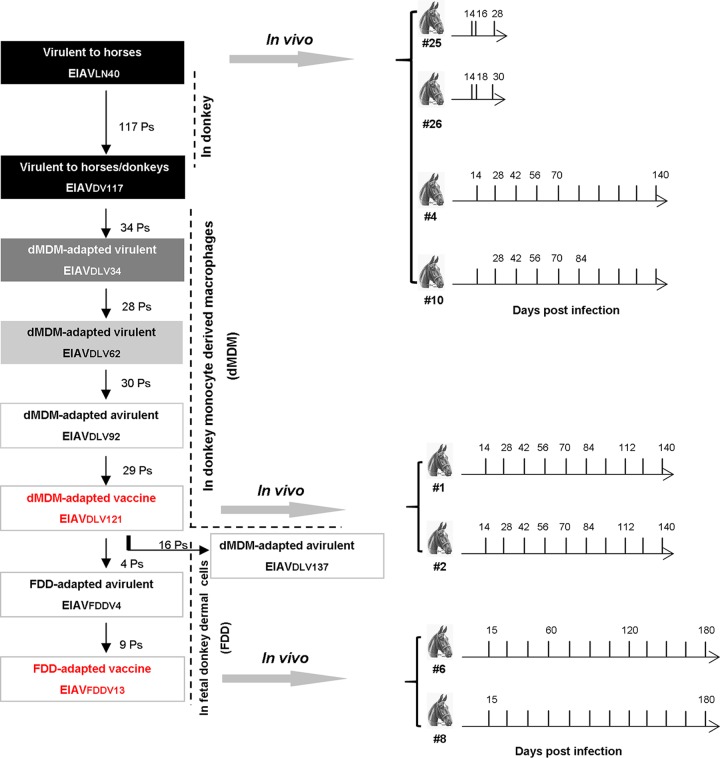FIG 1.
Schematic of the research strategy. LN40, an EIAV strain isolated from Liaoning, China, has undergone 16 consecutive passages in horses and is highly pathogenic to horses. After 117 consecutive passages (Ps) in donkeys, this virus was transformed into strain DV117, which is highly virulent in both horses and donkeys. The virulence of DV117 gradually decreased after consecutive passages in dMDMs in vitro. In this study, the proviral LTR sequences of the viruses after 34, 62, 92, 121, and 137 passages in dMDMs (strain DLV34 and its derivatives) and after 4 and 13 passages in FDD cells (strain FDDV4 and its derivatives) were sequenced. The gradual decrease in darkness from black to white indicates the reduction of virulence. The two live vaccine strains (DLV121 and FDDV13) are shown in red. The 34th generation (DLV34, virulent to horses), the 62nd generation (DLV62, virulent to horses), the 92nd generation (DLV92, avirulent but failing to induce protective immunity), the 121st generation (DLV121, avirulent and inducing protective immunity), and the 137th generation (DLV137, avirulent but having lost the ability to induce protective immunity) were sequenced. DLV121 was passaged for 13 generations in FDD cells to form the FDD-attenuated strain (FDDV13). We sequenced the LTRs of the 4th-generation DLV121 virus (FDDV4) passaged in FDD cells and the 13th-generation DLV121 virus (FDDV13) passaged in FDD cells. In addition, the evolution of the LTR in viruses from horses infected with LN40, DLV121, or FDDV13 was analyzed by sequencing.

